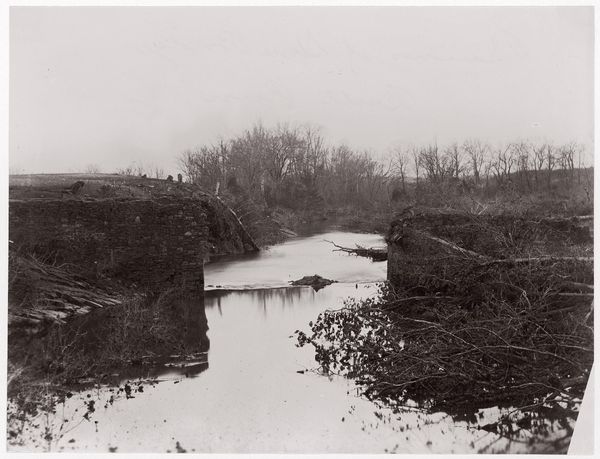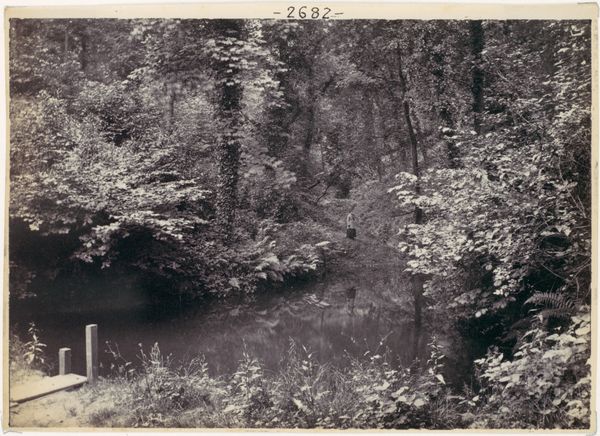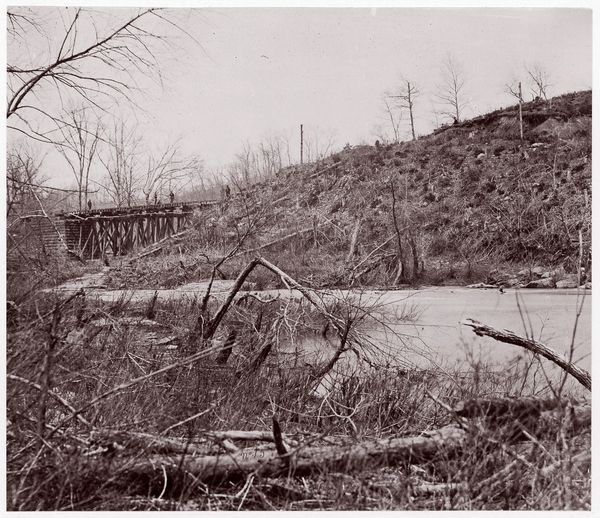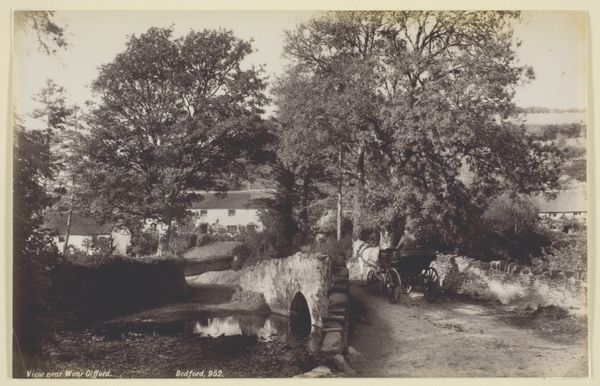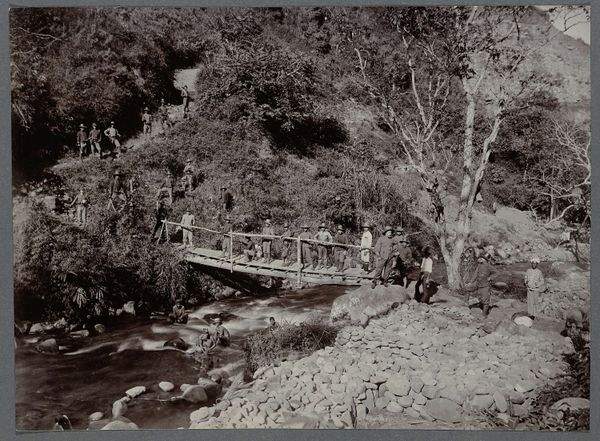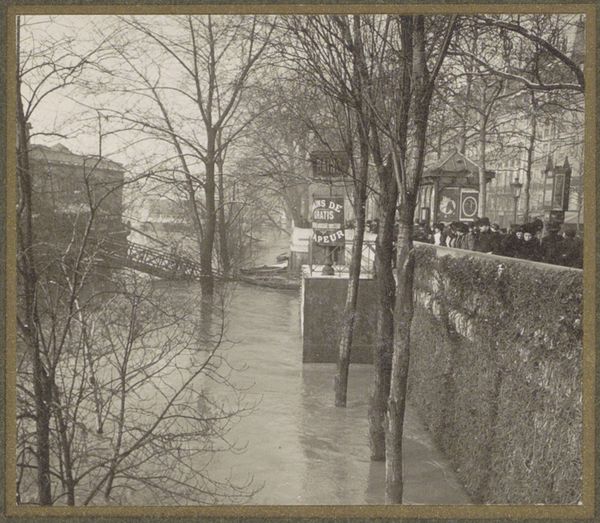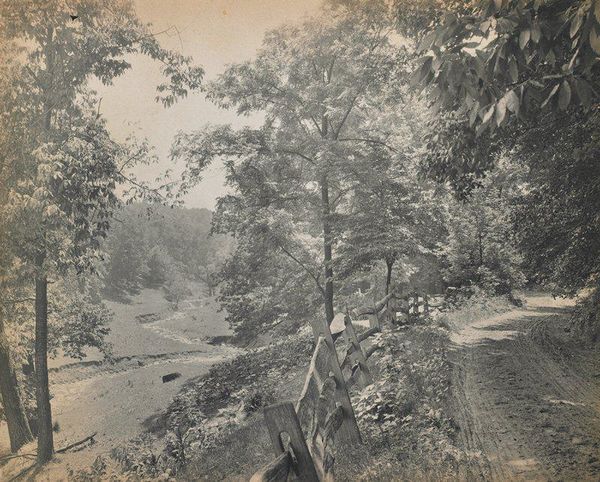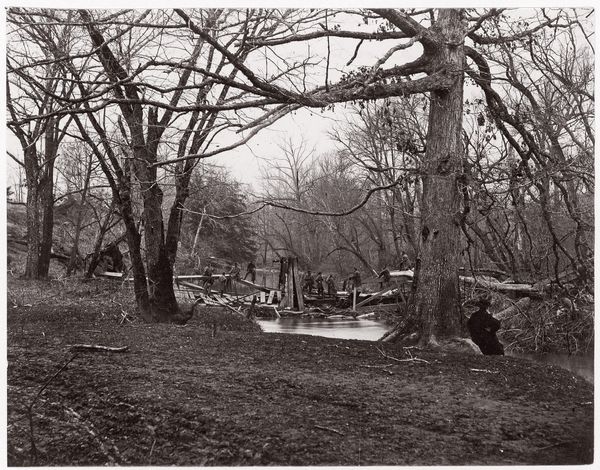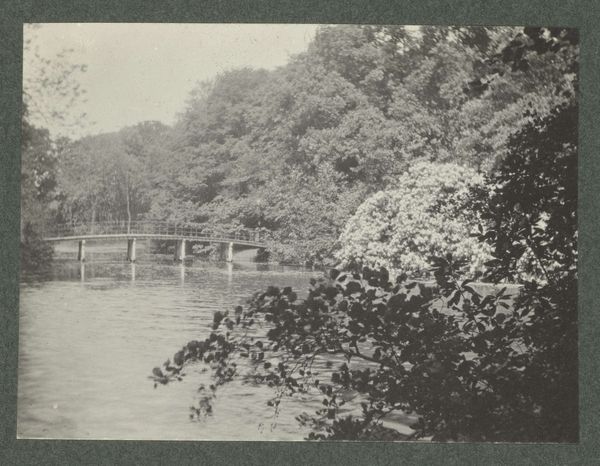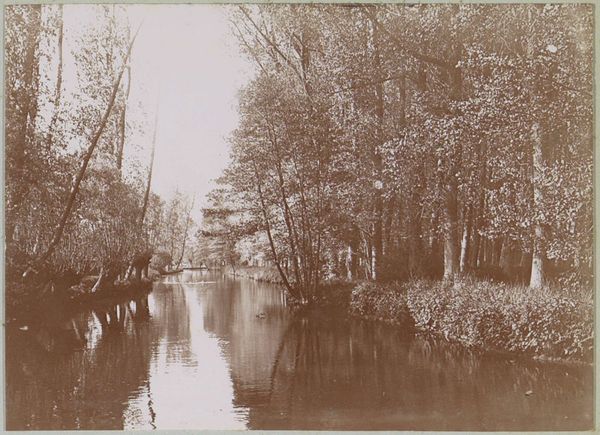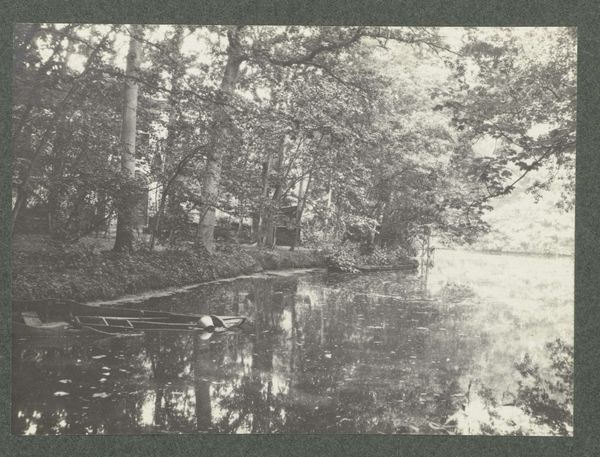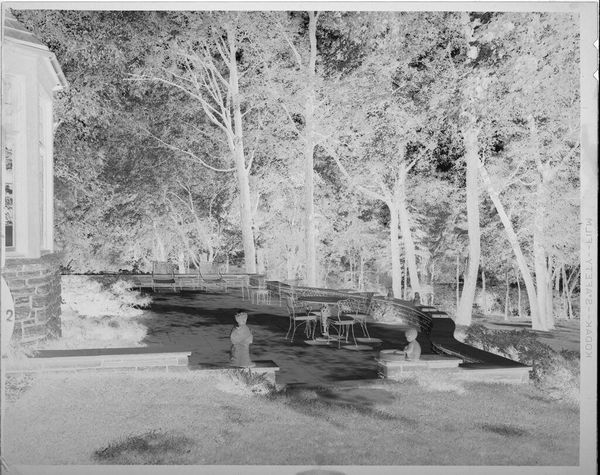![[View on Rapidan River, Virginia] by Timothy O'Sullivan](/_next/image?url=https%3A%2F%2Fd2w8kbdekdi1gv.cloudfront.net%2FeyJidWNrZXQiOiAiYXJ0ZXJhLWltYWdlcy1idWNrZXQiLCAia2V5IjogImFydHdvcmtzL2NkNDdmMTlmLTE5M2QtNDM3Yi04ZmE3LTJhZDk0YTg1OTIzYi9jZDQ3ZjE5Zi0xOTNkLTQzN2ItOGZhNy0yYWQ5NGE4NTkyM2JfZnVsbC5qcGciLCAiZWRpdHMiOiB7InJlc2l6ZSI6IHsid2lkdGgiOiAxOTIwLCAiaGVpZ2h0IjogMTkyMCwgImZpdCI6ICJpbnNpZGUifX19&w=3840&q=75)
photography, gelatin-silver-print
war
nature photography
landscape
river
natural composition
nature
photography
gelatin-silver-print
Copyright: Public Domain
Curator: The stillness is remarkable. It feels both serene and unsettling. Editor: Yes, Timothy O'Sullivan created this gelatin-silver print, titled “[View on Rapidan River, Virginia],” sometime between 1861 and 1865. Consider that period – the height of the American Civil War. Curator: Ah, that explains the subtle tension. What at first seems like a simple landscape quickly morphs into something else entirely. Those figures in the distance… are they soldiers? Editor: Indeed. O’Sullivan was commissioned to document the war, but rather than focusing solely on battle scenes, he often chose these more ambiguous, contemplative views. Think of the river as a symbolic boundary, a threshold between states, between ideologies, and, for the soldiers, perhaps between life and death. Curator: It's like a classical trope being subtly subverted. Pastoral scenes are meant to evoke peace and harmony, but here, the presence of war is palpable, a lurking threat. Even the muted tones seem to speak of melancholy. I keep returning to the water itself. Rivers often signify the passage of time, change. Given the historical context, that resonates deeply. Editor: The photographic process itself played a role in shaping the narrative, I think. Early photography demanded patience, long exposure times, creating images stripped of extraneous motion, filled with weighty symbolism. The river's reflective surface mirroring the sky also speaks to this. The water, like the photograph, reflects reality, but also interprets it. Curator: Precisely. O’Sullivan's image isn’t just recording a place; it’s encoding the psychological weight of a nation divided. Those bare trees reach like grasping claws to the sky…it communicates despair, perhaps, or an appeal for solace from an unhearing power. The two figures seem diminished against nature's scale and history. Editor: It powerfully encapsulates the complicated relationship between landscape, conflict, and memory during that turbulent period. It moves the Civil War beyond statistics and heroic renderings, reminding us of human stakes, and even of photography's complex power as historical record and poetic interpretation. Curator: I leave this encounter thinking about the many layers of silence present within the artwork, both ecological and social. Editor: I think it provides a visual testament to the war's impact felt in places far from the immediate conflict. A somber and necessary meditation on nature and nationalism.
Comments
No comments
Be the first to comment and join the conversation on the ultimate creative platform.
